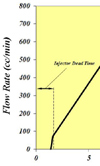The Big Bang
 The news that the Large Hadron Collider, near Geneva in Switzerland is back in commission, is to be greeted with relief by all who have a genuine interest in particle physics. Designed to answer fundamental questions about the Universe by accelerating beams of high energy particles creating proton-to-proton collisions, the results, it is hoped, should provide explanations to some of the most basic of laws surrounding the most elementary of objects in space and time. And from all this we might just gain a further understanding of our Universe and its beginning, starting with the Big Bang.
The news that the Large Hadron Collider, near Geneva in Switzerland is back in commission, is to be greeted with relief by all who have a genuine interest in particle physics. Designed to answer fundamental questions about the Universe by accelerating beams of high energy particles creating proton-to-proton collisions, the results, it is hoped, should provide explanations to some of the most basic of laws surrounding the most elementary of objects in space and time. And from all this we might just gain a further understanding of our Universe and its beginning, starting with the Big Bang.
But in the world of the calibration of electronic fuel injection systems we have our own Big Bang - that part of the engine start-up procedure when the engine is cold and fuel is injected for the first time. While not quite so critical for racing engines with port fuel injection, this initial period of operation is increasingly significant for road going vehicles and as technology moves forward, with all types of direct injection systems.
In any engine control system there are essentially four phases of engine operation: cranking, warm up, open and closed loop control. To these we can also add acceleration, deceleration and engine idle but let’s not get too carried away with all these at this stage. All of these will require fuelling and ignition but because each is also so sufficiently different from the other, different approaches to the control software will be needed for each phase. The first, and judging by the amount of research work undertaken over the years, the most difficult, is engine cranking and first fire. Now at this point it is perhaps worth pointing out that every manufacturer will have its own ideas, and that, depending on if you have to achieve certain hydrocarbon emission targets or not, will make the process more difficult. As these targets change, the ideas and strategies to meet them may also change.
In most, if not all modern port injection systems, the individual fuel injectors will be located such as to spray fuel directly into the intake port and timed to coincide with the intake stroke when the valve is open. Generally known as sequential injection, the system requires to know the precise position of the piston relative to top dead centre and also where it is relative to the valve timing as well. For this a crankshaft and a camshaft angular position sensor (CKP) will be required.
During the engine starting procedure at the point of cranking, the engine will not necessarily know exactly where it is in the cycle of events of the 4-stroke cycle. It will be able to detect the ignition trigger point but even with a cam sensor it will not necessarily know on which of the two cycles, firing or induction, it is on. With the desire to fire and start the engine as quickly as possible, one strategy is to fire all the injectors at once during the first cycle producing what in effect is a ‘Big Bang’. This will ensure that the engine fires almost instantly upon cranking and, say, when the engine speed is greater than 300 rpm, the electronics will know that the engine has completed cranking and moved into the warm-up phase. At this time another software subroutine will take over.
For racing engines with sequential injection and not necessarily the requirement for instant, key-on firing, a different strategy may be used. To build up oil pressure in the dry sump system, cranking could be encouraged for say, a second or so. After this, the engine will have determined when to fire its injectors relative to valve opening and since there aren’t any hydrocarbon emission spikes to worry about, each of the cold cylinders can fire in turn.
There’s much more to getting an engine started than just cranking it.
Written by John Coxon.